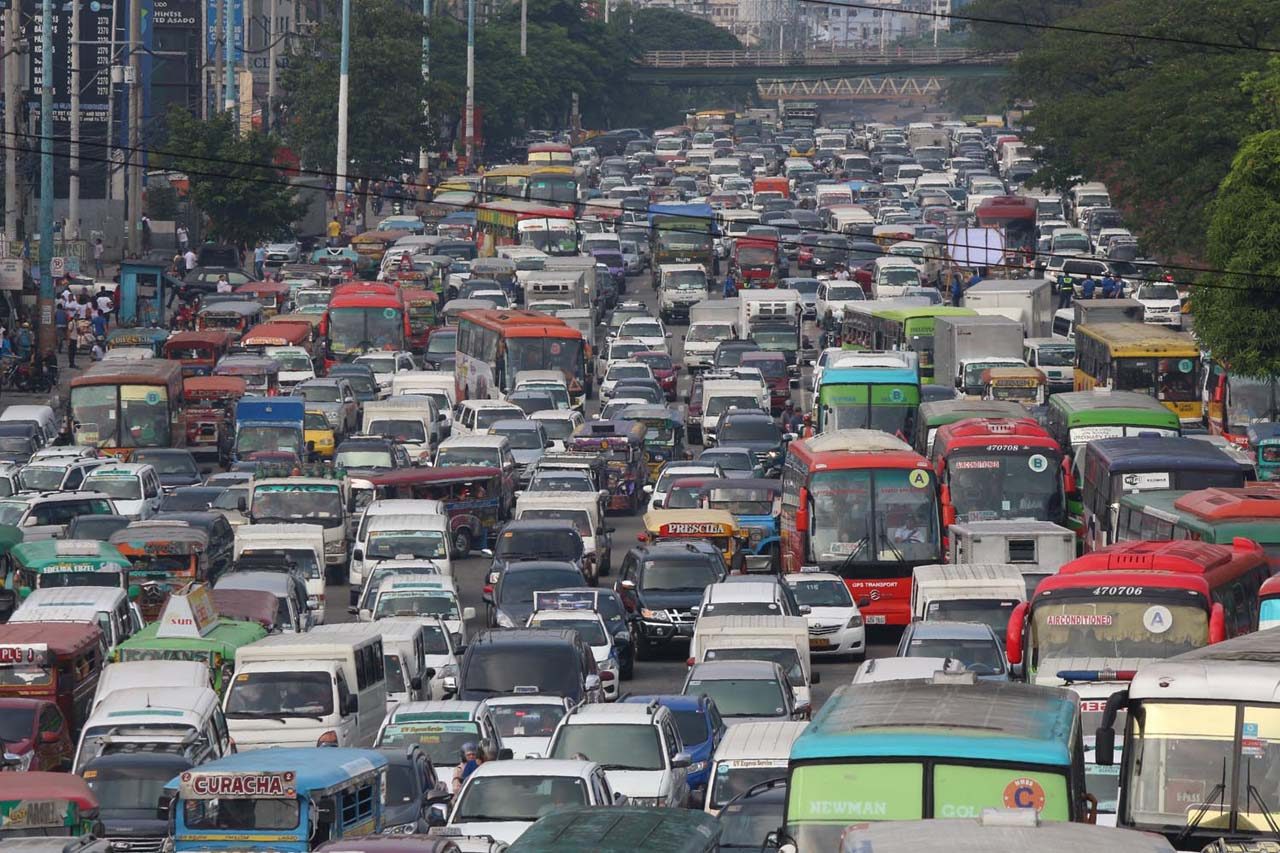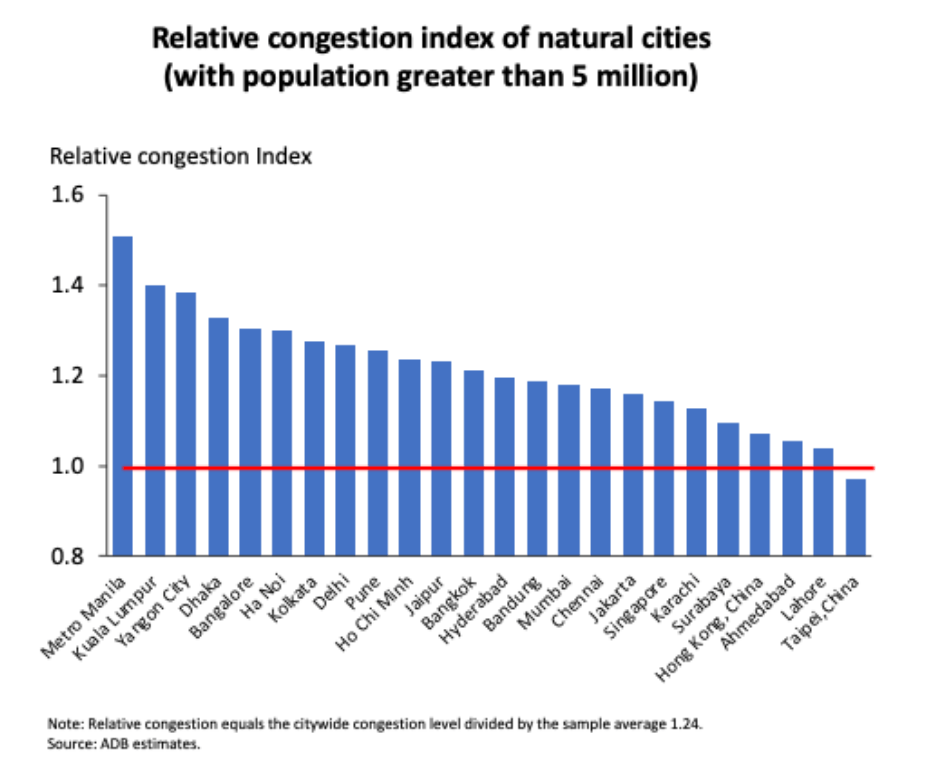SUMMARY
This is AI generated summarization, which may have errors. For context, always refer to the full article.

MANILA, Philippines – A study by the Asian Development Bank (ADB) ranked Metro Manila as the most congested city out of all 278 cities in developing Asia.
The ADB found that out of the cities with a population greater than 5 million, the Philippine capital’s transport system impeded mobility of commuters the most and had a congestion value of 1.5. The average congestion of all sampled cities was at 1.24.
Other congested cities include Kuala Lumpur in Malaysia, Yangon in Myanmar, Dhaka in Bangladesh, Bengaluru in India, and Hanoi in Vietnam.
The report noted that while cities bring people together and enhance industries, congestion gets in the way of further development. (READ: [ANALYSIS] What Duterte doesn’t get about Metro Manila traffic)

The ADB came up with the ranking by collecting projected trip data from Google Maps for 278 cities in 28 regional economies with populations greater than half a million. The ADB then identified a number of hotspots in terms of luminosity and population to determine where people lived.
The researchers then sampled random locations from hotspots as origins and destinations. Inquiries were then made to Google Maps about driving in both directions between origins and destinations during peak hours.
Trends
The ADB found that riding public transport was 3 times longer than using cars.
“This is probably because public transport duration includes time spent walking to pickup points, waiting, stops, and walking from drop-off points,” said the report.
Researchers also noted that 25% of the surveyed trips could not even be made by public transport.
ADB researchers also pointed out that urban transport reflects how governments manage a city. They said that in the case of the Philippines, too many government agencies have overlapping functions.
“An estimated 31 national government agencies or more, and many more local bodies, are involved in delivering urban services. Overlapping mandates and duplicated functions are common, undermining interagency amity and coordination,” the report said.
Moreover, the study found that a lack of efficient and affordable public transportation causes urban congestion.
What can be done?
ADB director for macroeconomics, economic research, and regional cooperation Abdul Abiad said cities should shift to transit-oriented development.
“When you build public transport, you want development to be around public transit, in terms of high density, and making sure that those areas are walkable and have easy access to transport,” he said.
Abiad added that congestion makes it hard for workers to get to jobs and firms to connect to customers, so the benefits of urbanization are harder to reap.
The ADB recommended increasing investments in public transport infrastructure to expand and improve road and rail networks.
Despite the high capital investment required, the economic benefits of rail mass transit are said to outweigh cost considerations.
Multimodal transport systems can also extend the coverage of public transport systems by improving connectivity.
The report also noted that while privately-run mass transportation has a role to play in urban transport systems, it should be regulated and coordinated under a government agency. – Rappler.com
Add a comment
How does this make you feel?
There are no comments yet. Add your comment to start the conversation.